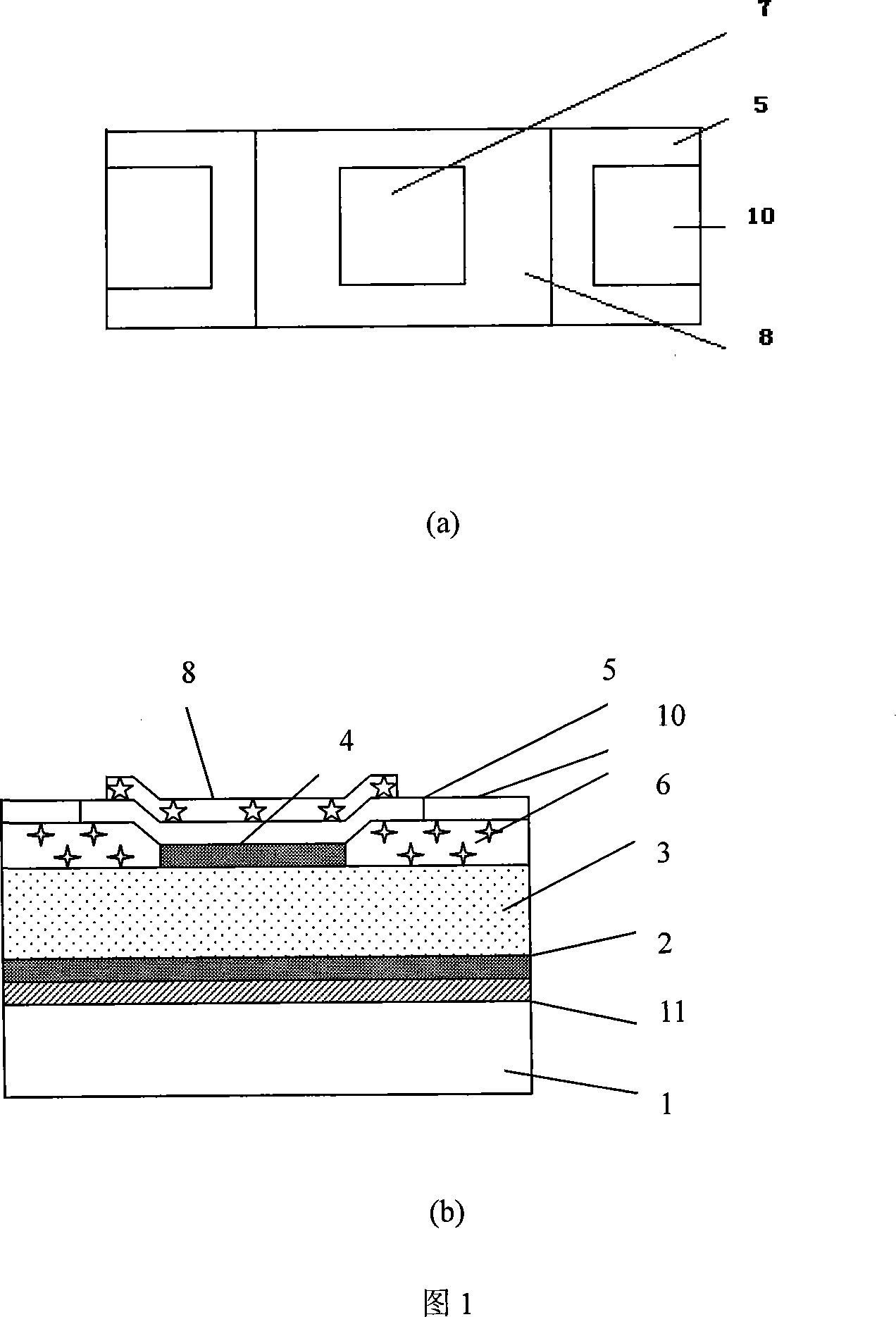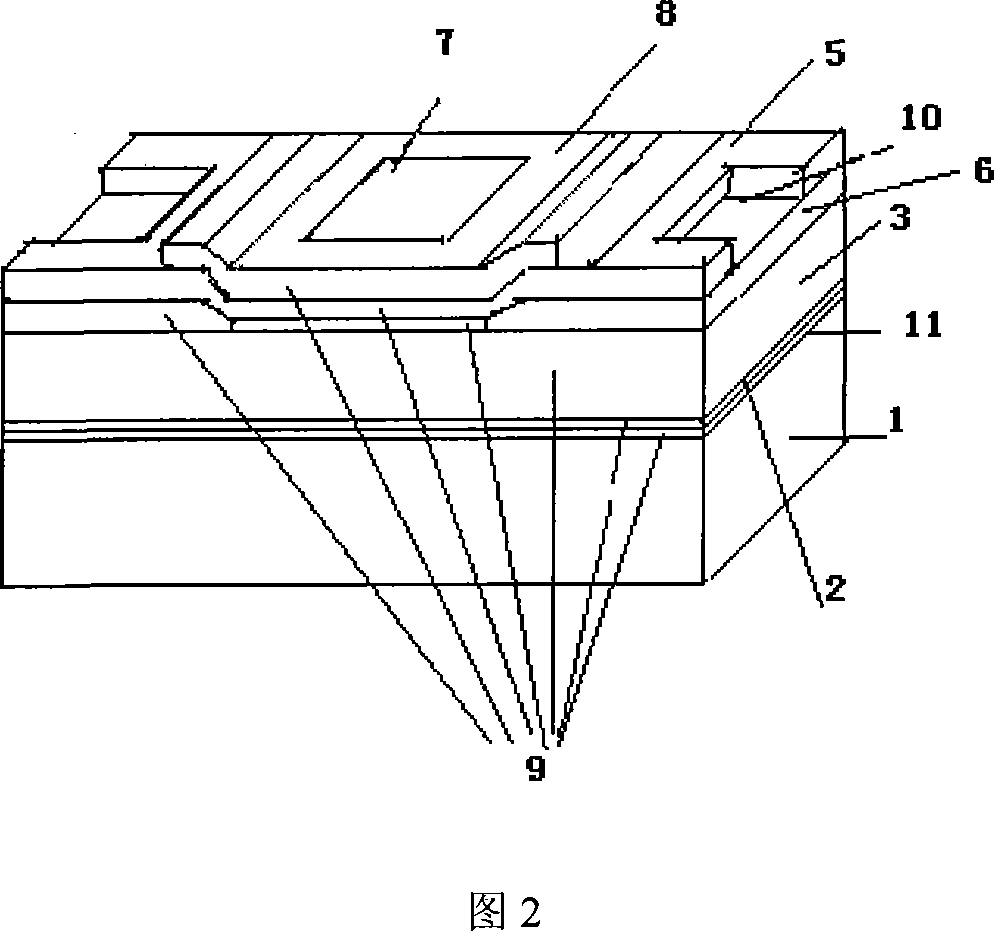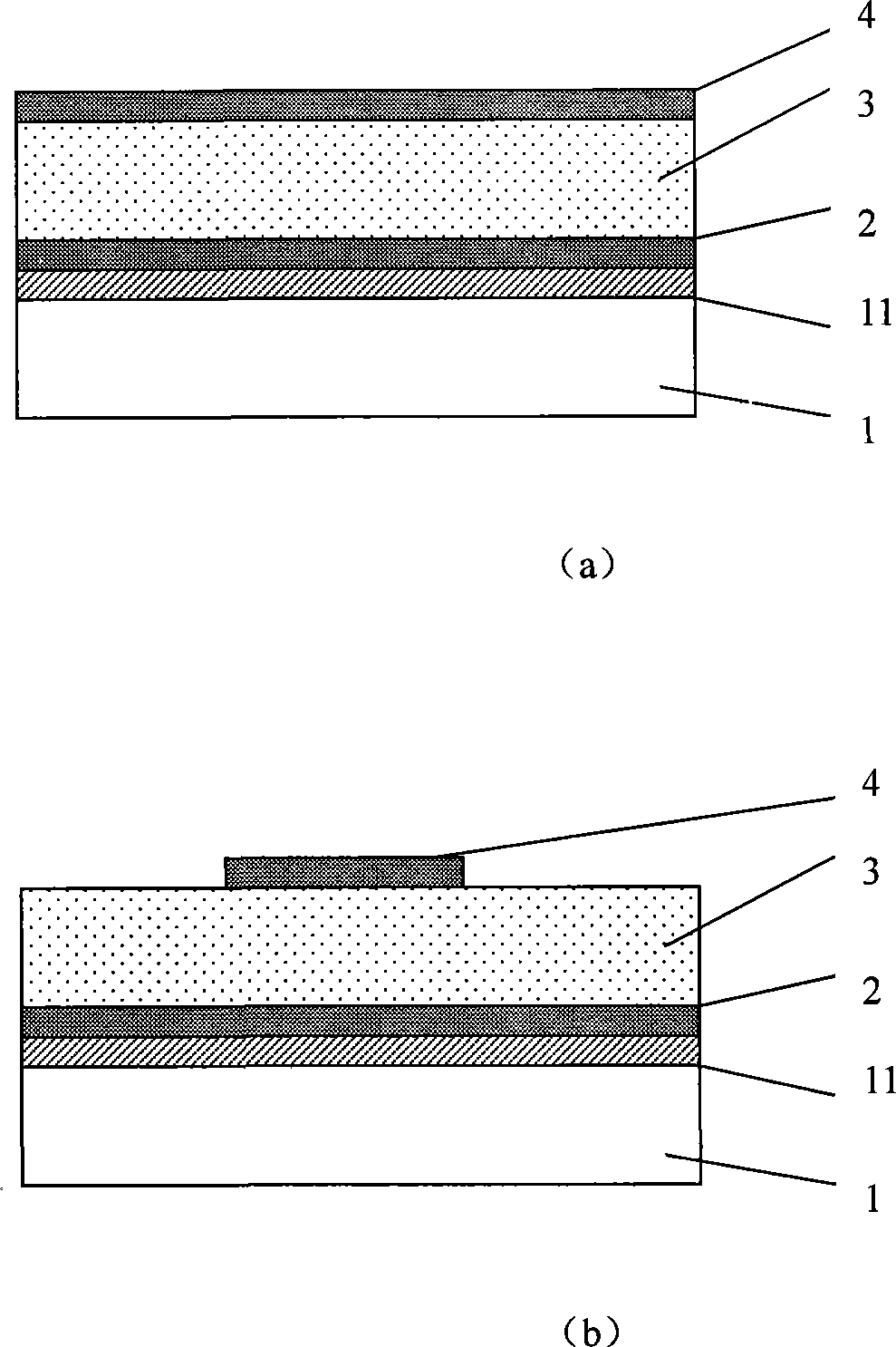Tellurium-cadmium-mercury infrared detector chip for preventing non-infrared radiation incidence plane response
A technology of infrared radiation and mercury cadmium telluride, which is applied in the direction of optical radiation measurement, instruments, measuring devices, etc., can solve the problems that cannot effectively solve defects and affect the detection performance of devices
- Summary
- Abstract
- Description
- Claims
- Application Information
AI Technical Summary
Problems solved by technology
Method used
Image
Examples
Embodiment Construction
[0011] Taking the unit device as an example, the specific implementation of the present invention will be described in detail in conjunction with the accompanying drawings:
[0012] Utilize the conventional device preparation process: firstly, a surface of the mercury cadmium telluride sheet 3 is de-damaged, and a first anodic oxide layer 2 with a thickness of 80 nanometers is grown on the surface.
[0013] The side of the mercury cadmium telluride sheet on which the anodized layer grows is pasted together with the sapphire substrate 1 with low-temperature epoxy glue, and fully cured to ensure the bonding strength.
[0014] The upper surface of the pasted HgCdTe sheet is thinned and damaged, and the thickness of the HgCdTe sheet should be controlled at about 10 microns.
[0015] A shallow oxide layer is grown on the upper surface by anodic oxidation; patterns are etched by photolithography and plasma etching; bromine corrosion treatment is performed to remove part of the damag...
PUM
| Property | Measurement | Unit |
|---|---|---|
| Thickness | aaaaa | aaaaa |
| Thickness | aaaaa | aaaaa |
| Thickness | aaaaa | aaaaa |
Abstract
Description
Claims
Application Information
 Login to View More
Login to View More - Generate Ideas
- Intellectual Property
- Life Sciences
- Materials
- Tech Scout
- Unparalleled Data Quality
- Higher Quality Content
- 60% Fewer Hallucinations
Browse by: Latest US Patents, China's latest patents, Technical Efficacy Thesaurus, Application Domain, Technology Topic, Popular Technical Reports.
© 2025 PatSnap. All rights reserved.Legal|Privacy policy|Modern Slavery Act Transparency Statement|Sitemap|About US| Contact US: help@patsnap.com



